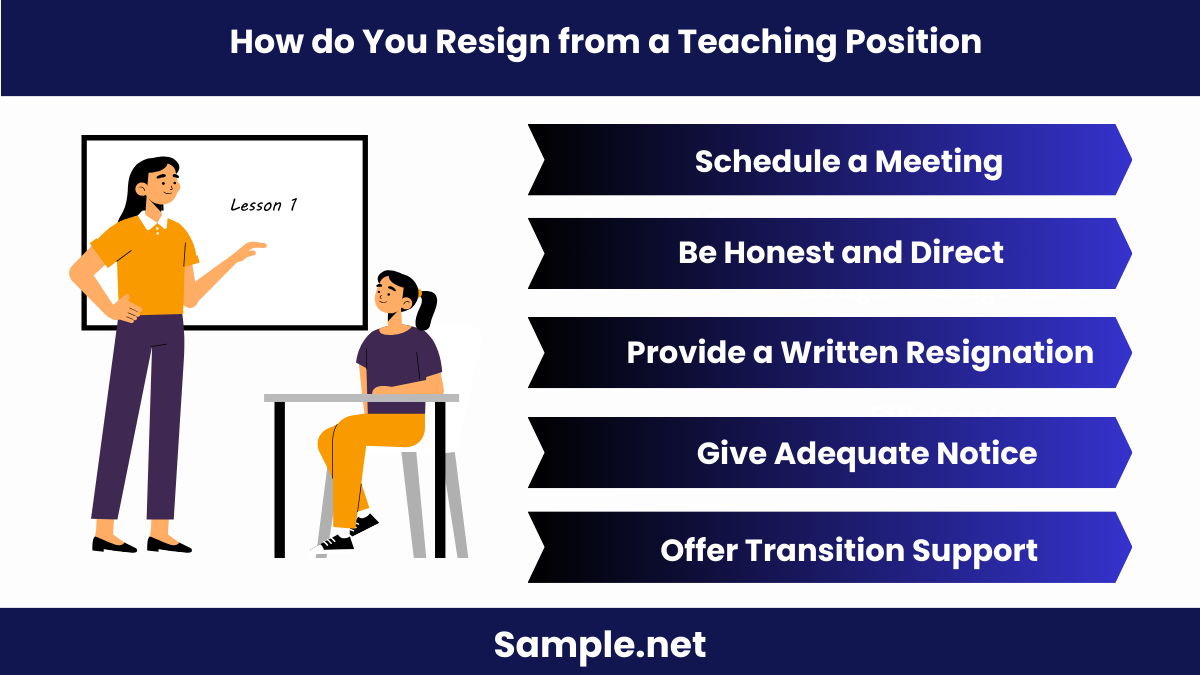Teacher Resignation Letter Samples
-
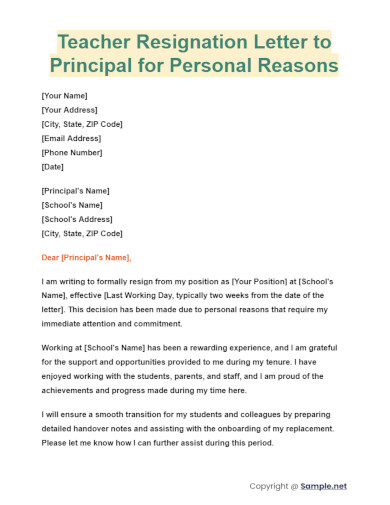
Teacher Resignation Letter to Principal for Personal Reasons
download now -
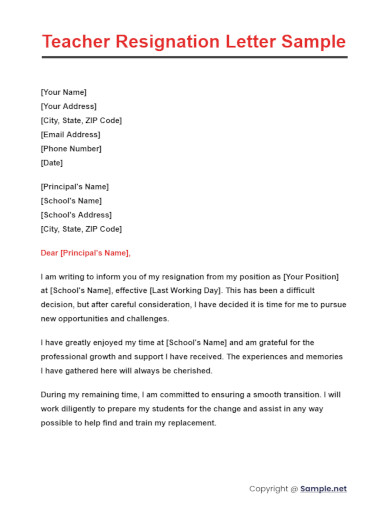
Teacher Resignation Letter Sample
download now -
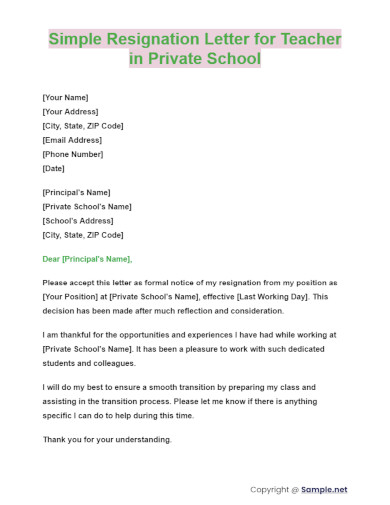
Simple Resignation Letter for Teacher in Private School
download now -
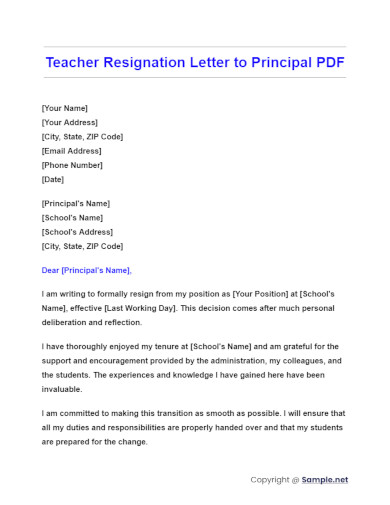
Teacher Resignation Letter to Principal PDF
download now -
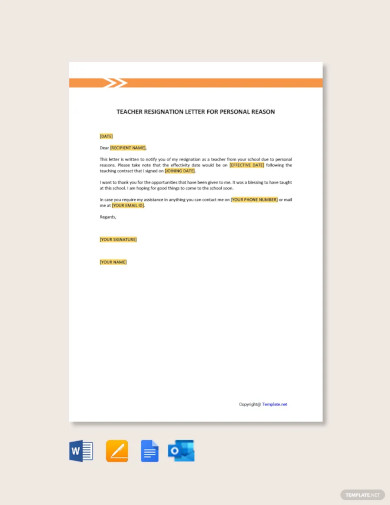
Teacher Resignation Letter for Personal Reasons Template
download now -

Free Teacher Resignation Letter for Personal Reasons Template
download now -
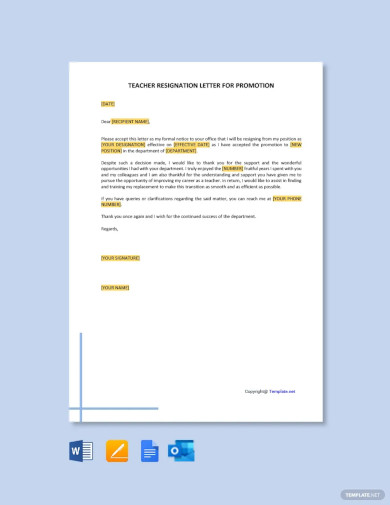
Free Teacher Resignation Letter for Promotion Template
download now -
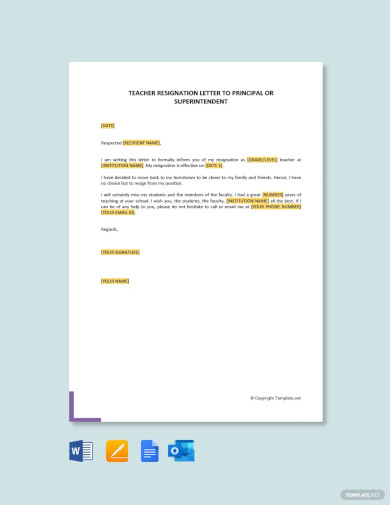
Free Teacher Resignation Letter to Principal or Superintendent Template
download now -
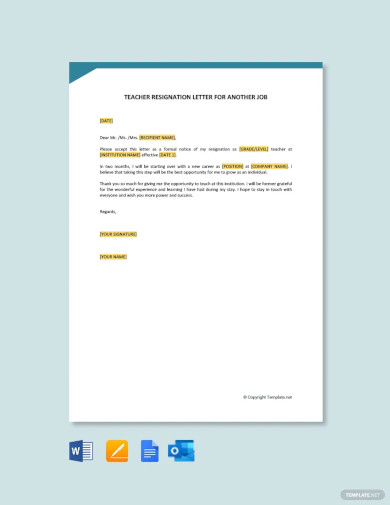
Free Teacher Resignation Letter for Another Job Template
download now -
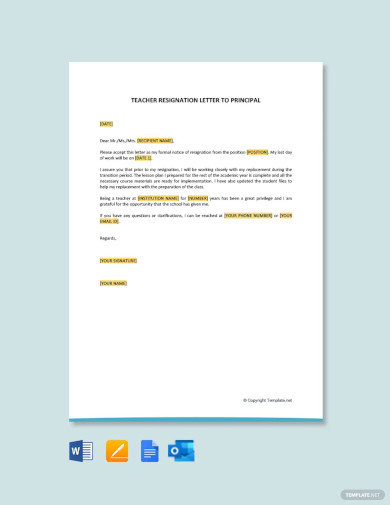
Free Teacher Resignation Letter To Principal Template
download now -
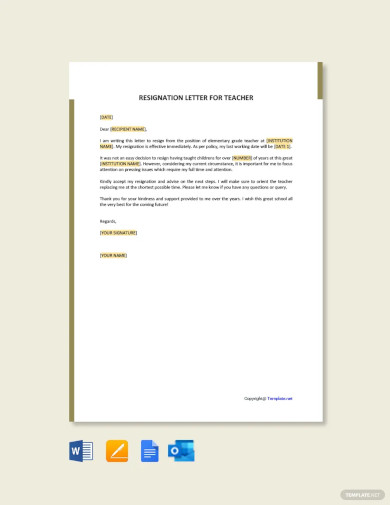
Resignation Letter Template for Teacher
download now -

Teacher Resignation Letter Sample
download now -
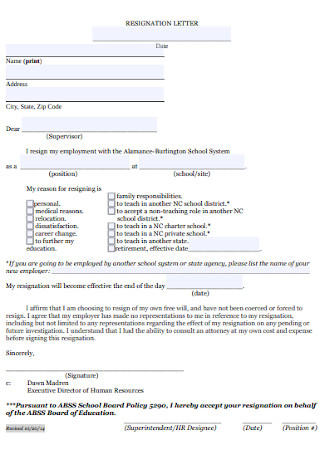
Elementary Teacher Resignation Letter
download now -
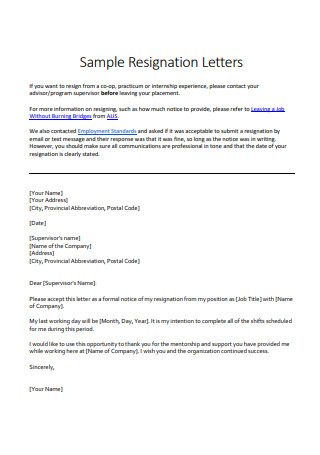
Sample School Teacher Resignation Letter
download now -

Primary School Teacher Resignation Letter
download now -
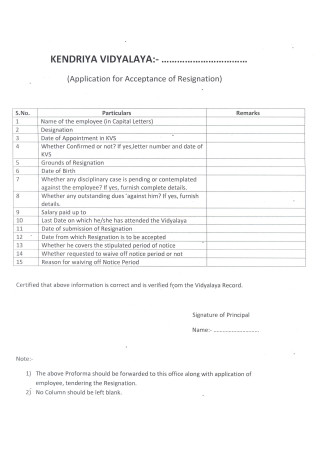
Personal Teacher Resignation Letter
download now -
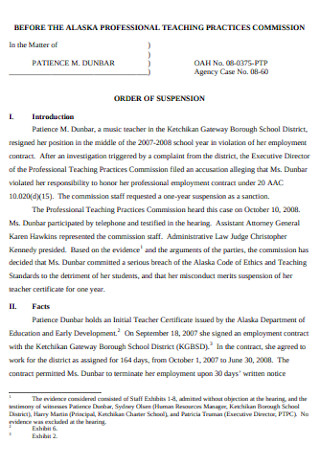
Music Teacher Resignation Letter
download now -

Principal Resignation Letter
download now -
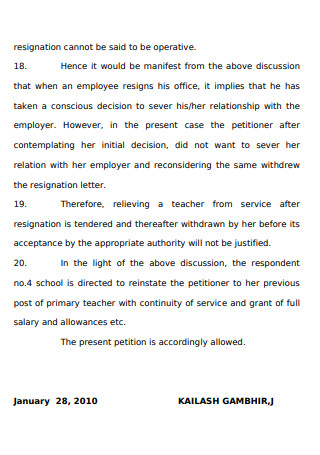
Sample Assistant Resignation Letter to Teacher
download now -
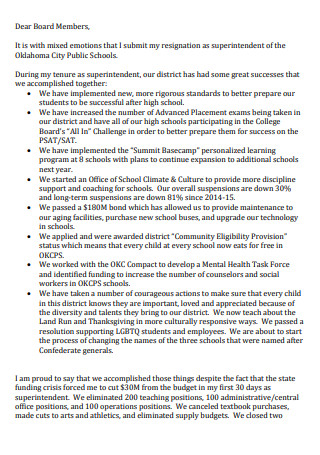
Formal Teacher Job Resignation Letter
download now -
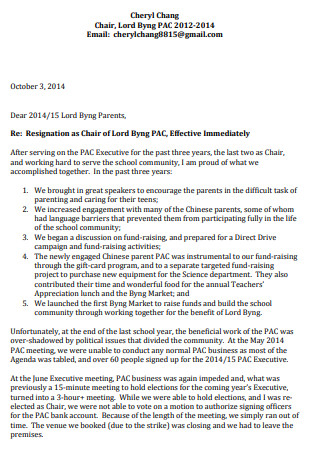
Teacher Resignation Letter Mid-Year Sample
download now -

Family Teacher Resignation Letter Form
download now -

Teacher Resignation Letter Retirement Sample
download now -
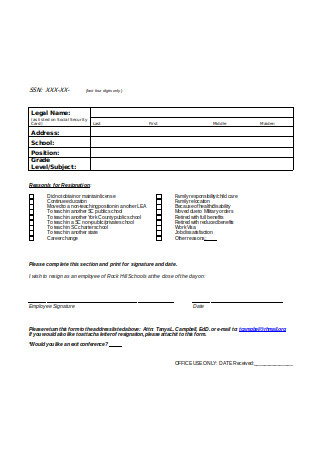
Teacher Resignation Letter Form Format
download now -
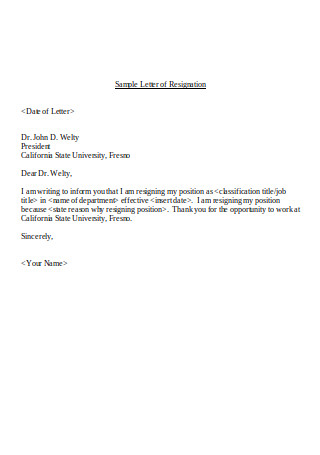
Sample Letter of Hindi Teacher Resignation
download now -
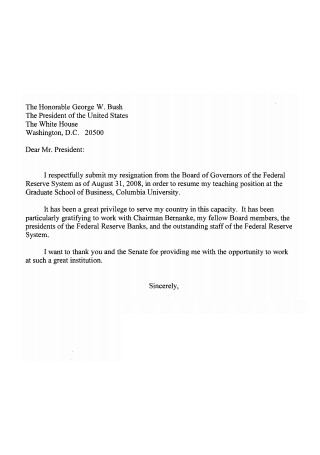
Simple Resignation Letter of Teacher for Personal Reasons
download now -
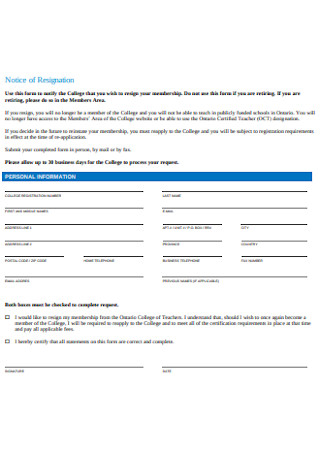
Notice of Teacher to Resignation
download now
FREE Teacher Resignation Letter s to Download
Teacher Resignation Letter Format
Teacher Resignation Letter Samples
What is Teacher Resignation Letter?
The Types of Teacher Resignation Letters
How to Write a Resignation Letter
The Dos and Don’ts of a Resignation Letter
How do I write a letter of resignation for a teacher?
How do you resign from a teaching position?
How do you tell the principal you are leaving?
How to write a simple short resignation letter?
Do you have to give a reason for resignation?
How do you resign in a respectful way?
How do you write a respectfully resignation letter?
Do you have to give a reason for resignation?
Should I explain why I am resigning?
How do you tell your principal you are retiring?
What not to say when you resign?
What happens if a teacher quits without notice?
How much notice does a teacher need to give to resign?
How do you tell the principal you are leaving?
Download Teacher Resignation Letter Bundle
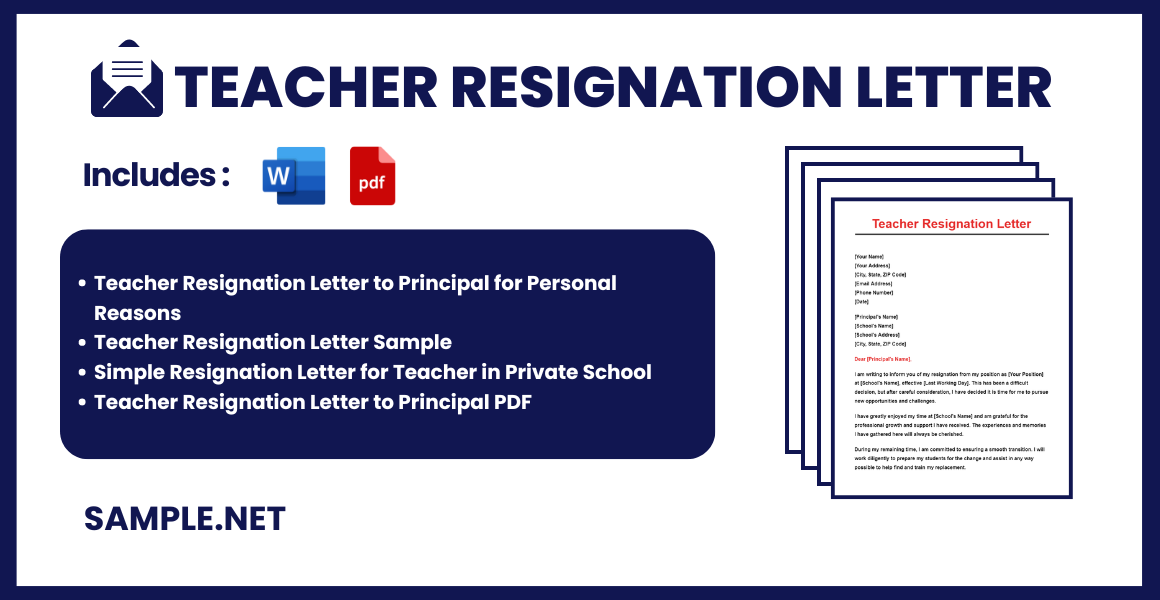
Teacher Resignation Letter Format
[Your Name]
[Your Address]
[City, State, ZIP Code]
[Email Address]
[Phone Number]
[Date]
[Principal’s Name]
[School’s Name]
[School’s Address]
[City, State, ZIP Code]
Dear [Principal’s Name],
1. Introduction
I am writing to formally resign from my position as [Your Position] at [School’s Name], effective [Last Working Day, typically two weeks from the date of the letter].
2. Body Paragraphs
- Reason for Resignation: Briefly explain the reason for your resignation.
- Positive Reflections: Share positive experiences and gratitude for the opportunity.
- Transition Assistance: Offer to help with the transition process.
3. Closing Paragraph
Thank you for your understanding and support. I wish the school continued success.
Sincerely,
[Your Name]
According to Quartz, “in 2015 a bit more than 1 million teachers left for a different job, in education or another industry. Less encouragingly, that same year, 1.8 million teachers became ‘persistently nonemployed’—Census lingo for teachers who didn’t find a job elsewhere after leaving their position.”
According to the National Center of Educational Statistics, “among public school teacher movers, 59 percent moved from one public school to another public school in the same district, 38 percent moved from one public school district to another public school district, and 3 percent moved from a public school to a private school between 2011–12 and 2012–13.”
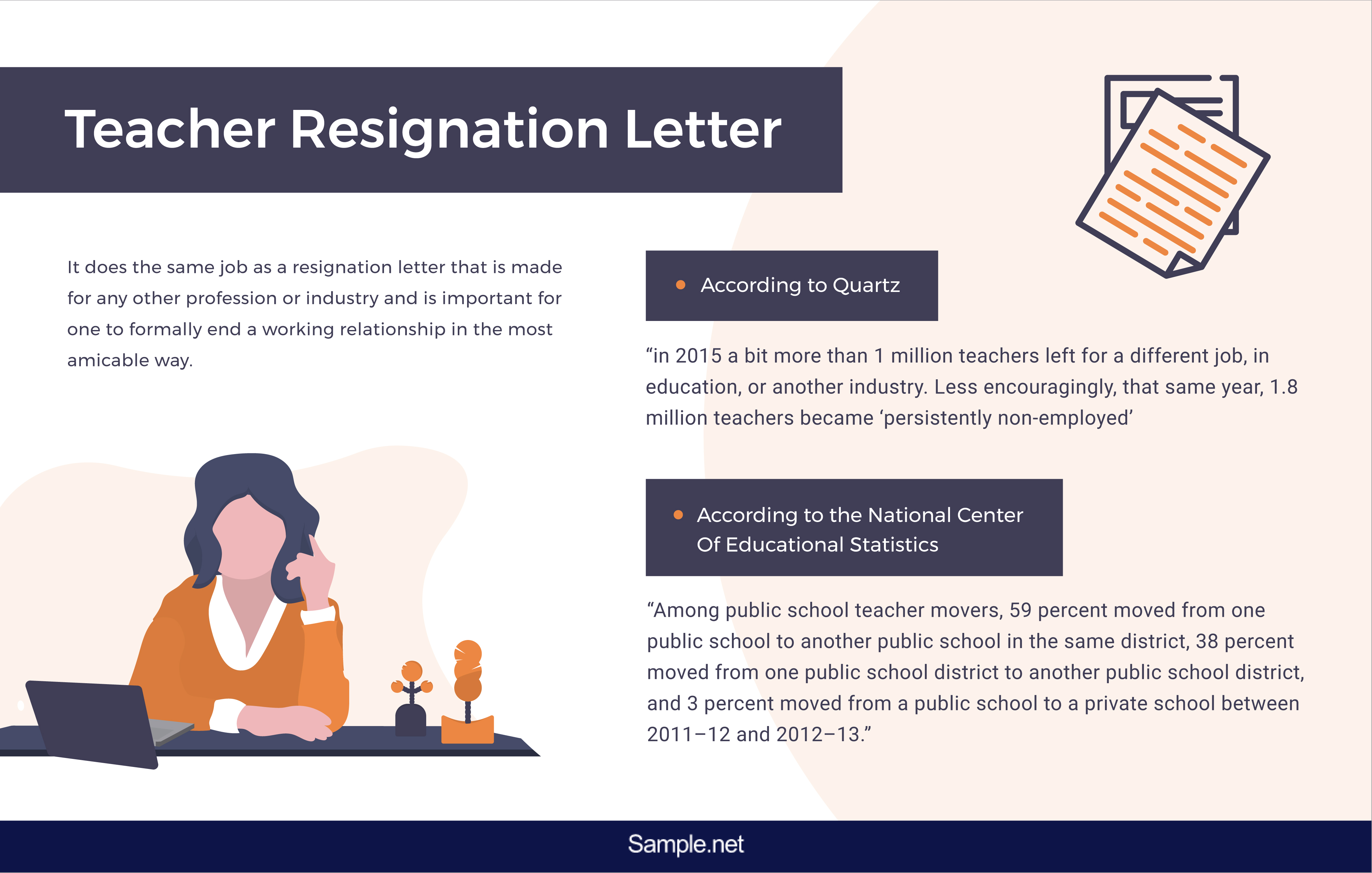
What is Teacher Resignation Letter?
A teacher resignation letter is a formal document submitted by a teacher to notify their employer of their intent to leave their position. It includes the resignation date, reasons for leaving, and a thank you note. This letter ensures a professional and respectful departure. Typically, it provides a notice period and offers to help with the transition process. Crafting a well-structured resignation letter is crucial for maintaining good relations and leaving a positive impression.
The Types of Teacher Resignation Letters
There are a few existing variations as far as resignation letters are concerned. The differences between them tend to be minute, and they all serve the same purpose anyway, but it still pays to learn about them. Especially if you need one particular variant over the others for whatever reason. Check the list below to learn the details of the different resignation letter types.
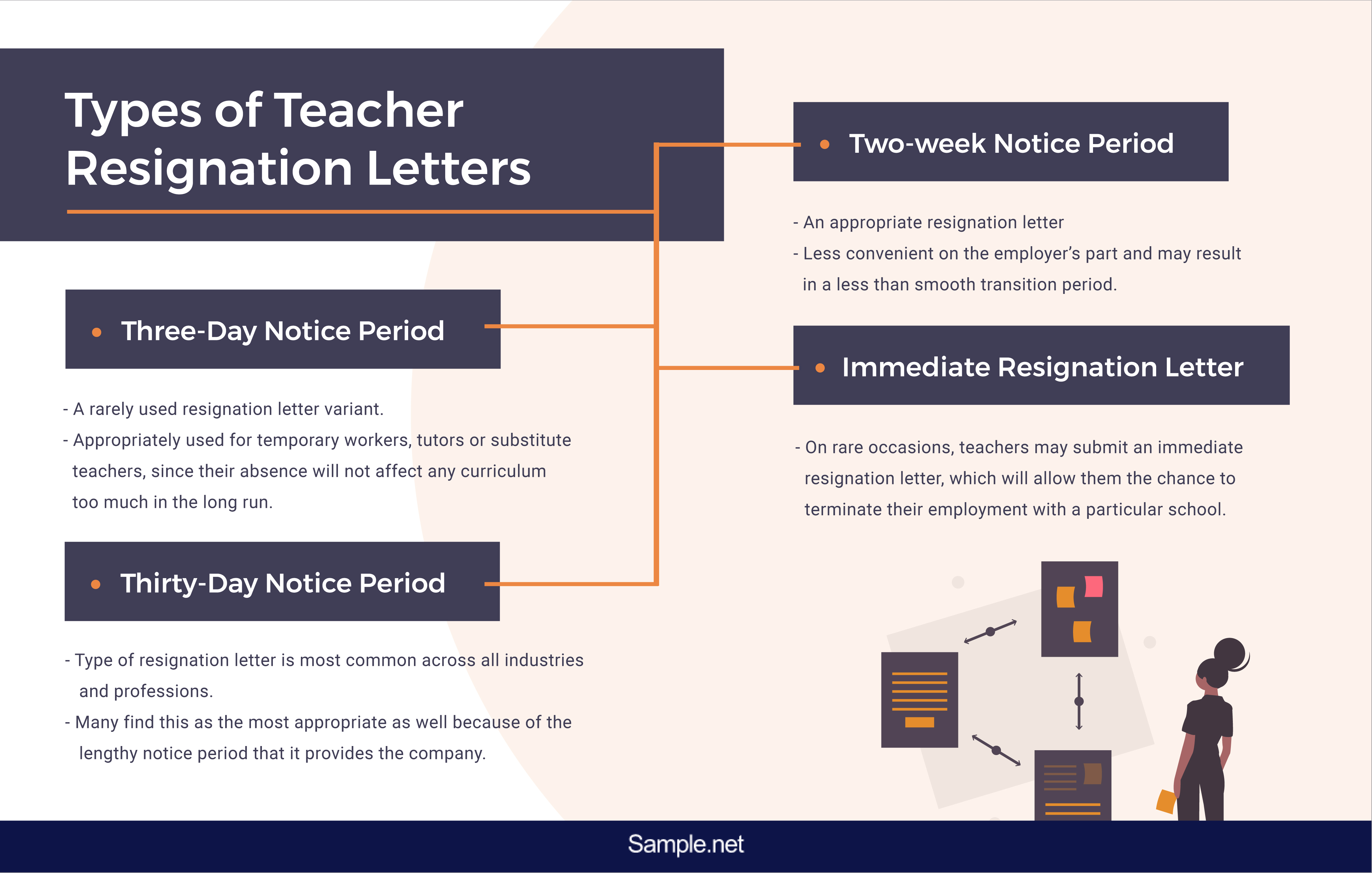
How to Write a Resignation Letter
When it is finally time for you to move on, knowing how to actually come up with a resignation letter is something that will come in handy. Follow the steps detailed below and make the overall creation process much easier and faster for yourself.
Step 1: Start With a Friendly Opening.
For your opening statement, you need to balance it out between something that is friendly yet formal all at once. Your goal is to ensure that your relationship with your soon-to-be former company remains an amicable one. Address your employer or HR officer directly. There is no need to include any official titles unless that company culture dictates a need for you to do so. You may also see Retirement Resignation Letter
Step 2: Make Your Resignation Intentions Clear
Be direct and clear with your intentions to resign. There are a few reasons for this. One is to make it absolutely certain to your employer that you intend on leaving your post and that this is not an attempt to gain a higher salary or any other post. Two, this is also to show how confident you are with your decision so that your employer won’t be faced with any misconceptions that you can still be coaxed into staying. You may also see Board Resignation Letter
Step 3: Give Them a Proper Notice
As a professional courtesy, you need to send in your resignation letter sometime before you actually intend on leaving. Most would provide a thirty-day grace period in order to ensure that everything is taken care of before the last day of work arrives. Others may give a notice of two weeks minimum. Doing so will also give your employer time to find an appropriate replacement for you. State the date which you intend your last day to fall on in your letter. You may also see Police Officer Resignation Letter
Step 4: Write Down Your Reasons for Resigning
This is a step that does not require you to be too thorough with the details. However, it is still a nice gesture and one that your employer is guaranteed to appreciate from you. Write down the exact reason why you intend to resign, even if it is over negative reasons. If you intend to switch careers or leave for another institution, for example, then say so. Doing this will give your employer a better sense of your situation and can help keep things amicable between the two of you. You may also see Email Resignation Letter
Step 5: Express Willingness to Help With the Transition Period
Every employee is going to be different even though the same role will be occupied. As the departing professional, you can include in your resignation letter that you intend to offer your aid during the transitional period that is to occur from the moment you send your resignation letter to the required last day that you are going to render. There is a lot that can be done during that time, including helping out in the search for your replacement and training the said replacement as well once one has been found. You may also see Teacher Observation Report
Step 6: Express Gratitude for the Experience
Towards the end of your letter, it can serve as a professional courtesy for you to thank your employer for all that you’ve learned and experienced during your time spent with them. This is a sentiment that is guaranteed to be greatly appreciated and will help further build up a positive post-employment relationship with your former employer going forward. It may even help you in the event that you ever decide to come back. You may also see Teachers Weekly Report
Step 7: End the Letter On a Graceful Note and Print It
Conclude the letter and check for any potential errors that you may have left. This may be your last chance to leave a lasting impression on your employer so it helps to not have any grammatical errors or typos on it. Once everything has been taken care of, print out the document and personally affix your signature on it. With this last step finally completed, all that is left for you to do is to actually submit it to your employer.

The Dos and Don’ts of a Resignation Letter
Even with the steps provided above, there are always other ways to improve upon any resignation letter you may have created. As such, it is wise to pay attention to the following dos and don’ts. Each one is guaranteed to make the quality of your resignation letter even higher than before.
The Dos
Do keep it strictly professional.
Even though it is your sincere desire to leave your present workplace, take note that this letter is still counted as a professional document and must be treated as such. Everything from its presentation all the way to its written quality and the language used must be work-appropriate. Not only is your soon-to-be former employer going to read through it, he or she is also likely to keep a copy of it for filing purposes. So never present anything less than your professional best, even if this is your resignation letter. You may also see Teacher Evaluation
Do express positive feelings about your experience, if applicable.
Even if your experience was a mixture of both good and bad in reality, for your resignation paper it would be advantageous for you to emphasize the positive moments and feelings you have over your work experience. However, this is not a license for you to go overboard or embellish. In the event that you are leaving because of a negative experience, the best you can do is to simply avoid any overt negativity and state your specific reason directly and in as neutral a tone as you possibly can. You may also see Teacher Action Plan
Do talk about what you’ve learned from your experience.
Every employer would like to hear about any positive developments that transpired in the tenure of his or her former employees. It pays to include any learning experiences that you are willing to share on your resignation letter. Doing this will show that you have grown either personally or professionally during your time in their employ, which in turn reflects well on the employer, regardless of how or why you have chosen to leave. Anything that can help nurture your post-working relationship is always good to include. You may also see Teacher Employment Agreement
Do keep things short but specific.
This is a resignation letter and not a personal one. Due to its professional nature, it is advisable that you keep the contents short but highly specific. Be clear and direct about whatever it is that you want to say in your letter. Do not litter it with overly long anecdotes or anything else that can be seen as unnecessary. As flattering as your words may end up being, even your employer may find the letter long-winded, which is always something to avoid. In short, do not mince your words with this type of document. You may also see Teacher Contract
Do ask for a reference.
Since this is a voluntary resignation and not anything that could potentially reflect badly on you, such as a firing, then it could be worth your while to ask your employer for a reference. If your employer says yes, then this can help your career down the line since they can be used to vouch for your character and relevant skillsets. However, it is still worth noting that if you are leaving for negative reasons or if you have had major conflicts with your employer or with colleagues then it may not be a good idea to try your luck. You may also see Teacher Student Agreement
The Don’ts
Do not be overly critical of your former workplace.
It should be worth mentioning that to maintain a cordial or amicable relationship with your former employer, it is best to avoid criticizing them in your resignation letter. However, there are instances where you might feel justified, especially for those who have not had the best workplace experiences and are leaving as a direct result. Nonetheless, it is still the wiser move to avoid putting too much or any of your grievances and criticisms on writing. Write the reason why you are resigning, provide the appropriate notice, thank them for your time, and be on your way. You may also see Development Plan For Teacher
Do not include negative comments about your colleagues.
The previous tip focused on your employer and perhaps the organization in general. In this step, it is noted that the same type of advice will also be appropriate, except it is now directed at your colleagues. Not every professional has to be friends or is even required to get along with everybody at work. However, regardless of what personal or professional problems you have encountered with your co-workers, it would be highly unprofessional on your part if you decide to use your own resignation letter as a platform to take one last shot at them. It simply isn’t worth it and will not do you any good in the future. You never know who you will run into or whose help you will need in the future. You may also see Excuse Letter
Do not explicitly mention a higher salary as your reason for leaving.
Employers will understand that sometimes the reason why their employees leave is because of financial reasons — namely another company has offered them a higher paycheck. However, this is not something that you should explicitly state in your resignation letter, even if it is the truth. There are always going to be ways around this situation, such as citing other legitimate and valid reasons for your resignation. If writing something can cause potential trouble for you and your employment chances in the future, then it is definitely not worth including and this example is clearly among them. You may also see Authorization Letter
Do not be vague about your overall reasons for resigning.
For reasons pertaining to transparency, you ought to know that it is not advisable to be too vague with your reasons for resignation. of all the people to inform, your employer is definitely the most deserving to know your side of things as much as possible. Although there are unquestionably certain things that you need to avoid explicitly stating, you must do your best to retain your integrity and specify your reasons. If your employer ends up becoming a reference then your honesty may be something that they can praise to your future employers as well. You may also see Consent Letter
Do not forget to proofread.
As noted in the first tip written in the dos section, a resignation letter is still a professional document. What you write and how you write it is still going to be a reflection of you as a professional. Therefore, it is absolutely unacceptable for you to submit a resignation letter that is full of spelling errors, inaccurate facts, or grammatical errors. After you have finished the draft, take a few minutes to refresh your mind and then re-read your own letter. Then, after taking note of whatever mistakes you might have made, implement the corrections and edit your work.
How do I write a letter of resignation for a teacher?
Writing a teacher resignation letter involves clarity and professionalism. Follow these steps for an effective letter:
1. Start with a Formal Salutation
Begin with a respectful greeting, such as “Dear Principal [Name].”
2. State Your Intent Clearly
Mention that you are resigning from your teaching position, specifying the effective date.
3. Provide a Brief Reason
Include a concise explanation for your resignation, without going into too much detail.
4. Express Gratitude
Thank the administration for the opportunity and experiences gained.
5. Offer Assistance
Offer to help with the transition process, such as training a replacement.
Example: “Dear Principal Smith, I am writing to inform you of my resignation from my teaching position, effective June 30, 2024. This decision was not easy, but after much consideration, I have decided to pursue further studies. I am grateful for the support and opportunities provided by the school. I am willing to assist in any way to ensure a smooth transition.” You may also see Permission Request Letter
How do you resign from a teaching position?
Resigning from a teaching position requires a respectful and professional approach. Here are the steps:
1. Schedule a Meeting
Arrange a private meeting with your principal to discuss your decision.
2. Be Honest and Direct
Clearly state your intention to resign and the reasons behind your decision.
3. Provide a Written Resignation
Hand in your formal resignation letter during the meeting.
4. Give Adequate Notice
Offer a reasonable notice period, typically as specified in your contract.
5. Offer Transition Support
Express your willingness to help with the transition, such as mentoring your successor. You may also see To Whom It May Concern Letter & Email
How do you tell the principal you are leaving?
Informing the principal about your resignation should be done thoughtfully. Follow these steps:
1. Request a Private Meeting
Arrange a one-on-one meeting with your principal.
2. Prepare Your Message
Plan what you will say, focusing on clarity and professionalism.
3. Be Direct and Honest
Clearly state your intention to resign and your reasons.
4. Provide Your Resignation Letter
Submit your written resignation letter, such as a Standard Job Resignation Letter.
5. Offer to Assist
Mention your willingness to aid in the transition process. You may also see Job Letter of Recommendation
How to write a simple short resignation letter?
A simple short resignation letter should be concise and to the point. Follow these steps:
1. Use a Formal Salutation
Begin with “Dear [Recipient’s Name],”
2. State Your Resignation Clearly
Mention that you are resigning and include the effective date.
3. Keep It Brief
Provide a short explanation if necessary.
4. Express Gratitude
Thank the recipient for the opportunity.
5. Close Formally
End with a professional closing statement.
Example: “Dear Principal Johnson, I am writing to resign from my position as a teacher, effective July 15, 2024. Thank you for the support and opportunities. Sincerely, [Your Name]” You may also see Board Resolution Letter
Do you have to give a reason for resignation?
Giving a reason for resignation is not mandatory, but it can be helpful. Here are the steps:
1. Evaluate Your Situation
Decide if sharing your reason is beneficial or necessary.
2. Keep It Brief
If you choose to include a reason, keep it short and to the point.
3. Maintain Professionalism
Ensure your explanation is respectful and professional.
4. Be Honest
Provide an honest reason, such as personal growth or family commitments.
5. Consider Confidentiality
If the reason is sensitive, you may simply state personal reasons. You may also see Consent Letter
How do you resign in a respectful way?
Resigning respectfully involves maintaining professionalism and courtesy. Follow these steps:
1. Inform in Person
Notify your principal or employer in person before submitting a written resignation.
2. Provide Adequate Notice
Give sufficient notice, typically as required by your contract or a Two Weeks’ Notice Resignation Letter.
3. Be Positive
Focus on positive experiences and express gratitude in your resignation letter.
4. Offer Transition Support
Show willingness to assist during the transition period.
5. Maintain Professionalism
Continue to perform your duties diligently until your departure. You may also see Letter of Employment
How do you write a respectfully resignation letter?
Writing a respectful resignation letter involves clarity, gratitude, and professionalism. Here are the steps:
1. Use a Formal Salutation
Start with “Dear [Recipient’s Name],”
2. State Your Intent Clearly
Mention your intention to resign and the effective date, similar to an Official Resignation Letter.
3. Express Gratitude
Thank the employer for the opportunities and experiences.
4. Offer Transition Support
Offer to help during the transition period.
5. Close Professionally
End with a professional closing statement. You may also see Explanatory Letter
Example: “Dear Principal Anderson, I am writing to formally resign from my teaching position, effective August 31, 2024. I am grateful for the opportunities and support provided during my tenure. I am willing to assist with the transition to ensure a smooth process. Thank you for everything. Sincerely, [Your Name]” You may also see Letter Of Explanation
Do you have to give a reason for resignation?
You don’t have to give a reason for resignation in your letter. A simple statement of intent, like in a Church (Religious) Resignation Letter, is sufficient.
Should I explain why I am resigning?
While it’s not mandatory, explaining your reason for resigning in a Professional Job Resignation Letter can provide closure and maintain positive relations with your employer.
How do you tell your principal you are retiring?
To tell your principal you are retiring, request a private meeting, clearly state your intent, provide a Teacher Recommendation Letter, and discuss your retirement plans professionally.
What not to say when you resign?
When resigning, avoid negative comments, blaming, or unprofessional language. Instead, maintain a positive tone, similar to a Letter of Instruction, and focus on your future plans.
What happens if a teacher quits without notice?
If a teacher quits without notice, it can lead to legal and professional consequences, as detailed in an Employment Letter. It may also affect future job prospects.
How much notice does a teacher need to give to resign?
Typically, a teacher needs to give a two-week notice to resign, ensuring a smooth transition. Check your contract or an HR Letter for specific requirements.
How do you tell the principal you are leaving?
To tell the principal you are leaving, schedule a meeting, explain your decision professionally, provide a written Explanation Letter, and offer to help with the transition.
In conclusion, understanding how to write a teacher resignation letter is essential for a smooth and professional exit. This article provided a comprehensive overview of various samples, forms, and letters, offering practical tips for creating effective resignation letters. By using these guidelines and examples, you can ensure that your resignation is handled gracefully and professionally. Whether you’re moving to a new opportunity or retiring, a well-crafted resignation letter will make the process easier. Use this guide and the Teacher Checklist to ensure you cover all necessary details and leave on good terms.


